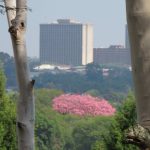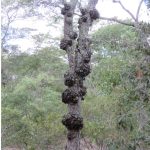TREE LIFE
APRIL 2023
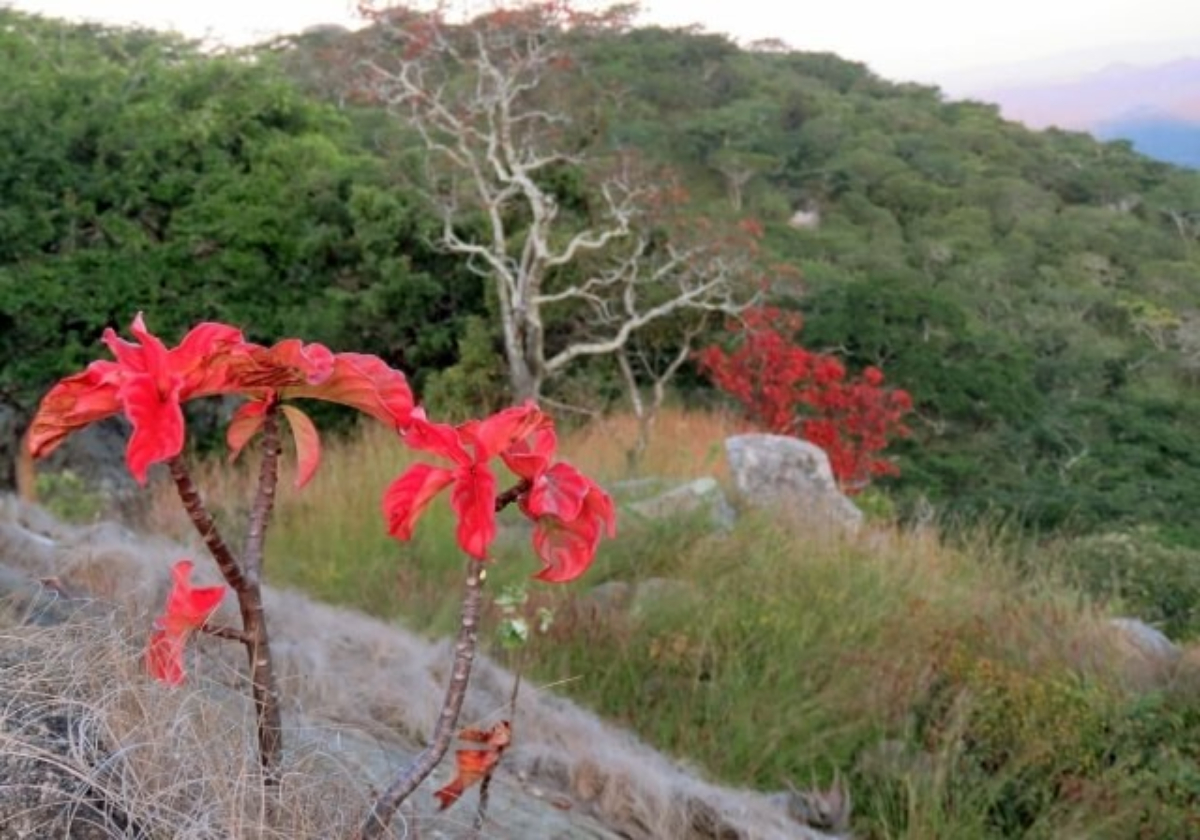 Hymenodictyon floribundum at Kopjie Tops, Mvuradonha. Photo by Rob Jarvis.
Hymenodictyon floribundum at Kopjie Tops, Mvuradonha. Photo by Rob Jarvis.
Welcome everyone to this issue of Tree Life. A bit of a bumper one thanks to the diligence of Ian Riddell who responded magnificently to Chairman Tony Alegria’s request for articles from the membership, and also to newbies, Lorraine Regadas and Vic Gifford who jointly produced a report on the Society’s visit to the Christon Bank Botanical Reserve.
My photo above is of three specimens of the same tree, Hymenodictyon floribundum which I am sure many of you will have seen their bright colours bedecking the granite out-crops almost everywhere in the country as the seasons change from summer wet to winter dry. Taken at the Kopjie Tops area of Mvuradonha Mountains and if you can brave the road, is well worth a visit after a pretty good rainy season thereabouts. Next month there will be a feature article about it.
THE ANNUAL GENERAL MEETING OF THE TREE SOCIETY OF ZIMBABWE
The 73rd A.G.M. will be held at the home of Rob and Sheila Jarvis at Art Farm on Sunday 21st May 2023 at 9.30 a.m.
Any proposals/resolutions and nominations for office bearers (and any volunteers to be on the Committee) should be forwarded by email to the Secretary, Teig Howson at: teig.howson@gmail.com by Thursday 18th May if possible, although proposals and nominations will be accepted from the floor. Venue details and directions to follow. N.B. The minutes of the 72nd A.G.M. held last year will be circulated again by email and thus will be taken as read at this year’s A.G.M. You need to be paid up to vote – you can pay your subscriptions in US$ at the A.G.M.
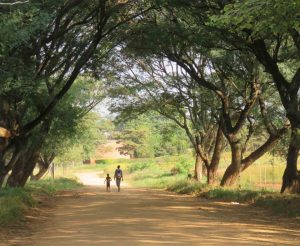 AGENDA:
AGENDA:
- Notice convening the meeting.
- Apologies
- Matters Arising
- Chairman’s Report
- Treasurer’s Report
- Election of Office Bearers
- Any other business
However, as we have done in the past, we will be having the social on the same day, program below:
09: 30 Coffee / Tea and Eats
10:30 AGM
11:00 Scavenger Hunt
12:00 Socializing and lunch
14:00 Fun Quiz
15:00 Coffee / Tea / Eats and socializing
Lunch will be provided and will consist of a Potjie and sides kindly organized by Rob and Sheila Jarvis. Details to follow. Bring your own chair and drinks.
Plates and cutlery provided.
Big Big Prizes in the Quiz and Scavenger Hunt!!!!
National Botanical Garden Outing Christon Bank
SUNDAY 22ND JANUARY 2023
By Lorraine Regadas & Vic Gifford
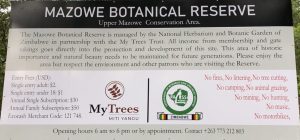
Parking was available inside the Gardens and the future entrance fee will be US$2 per adult. However, as the receipt books were still in the making we didn’t have to pay today.
The area is beautifully wooded with many different species.
The outing to the Botanical Gardens was enjoyed by the following 8 members of the Society.
Tony Alegria, Mark Hyde, Meg Coates-Palgrave, Vic Gifford, Lorraine Regadas, Jan van Bel, Dawn Siemers and Werner Fibeck.
List of woody species seen at Christon Bank on 22 January 2023
(Including a few climbers and herbaceous plants)
Species name – Notes/ comments
Adenia gummifera – Large liane, not really a tree.
Albizia antunesiana
Allophylus africanus
Ampelocissus obtusata subsp. kirkiana
Bridelia cathartica subsp. melanthesoides
Cassia abbreviata
Ceropegia sp. – Herbaceous twining species with unusual flowers
Combretum zeyheri – Combretum with the largest seed pods
Commiphora africana – Four species of Commiphora found!
Commiphora marlothii
Commiphora mollis
Commiphora mossambicensis
Coptosperma neurophyllum
Diospyros natalensis nummularia
Euclea divinorum
Euclea natalensis subsp. acutifolia
Eulophia longisepala – Orchid with 3 sepals that stand upright
Euphorbia griseola mashonica
Faurea saligna
Ficus glumosa
Ficus ingens
Gymnosporia senegalensis
Hexalobus monopetalus
Hymenodictyon floribundum
Kirkia acuminata
Lantana moldenkei – This was the native non-prickly Lantana with small flowers
Monotes engleri
Ochna puberula
Ozoroa reticulata
Pavetta schumanniana
Pouzolzia mixta
Psydrax livida
Rhoicissus revoilii
Searsia leptodictya
Strychnos potatorum
Tricalysia niamniamensis
Zanha africana
Ziziphus mucronata
The above list was compiled by Mark Hyde.
Also seen was possibly a white banded Ceropegia (Ceropegia nilotica)
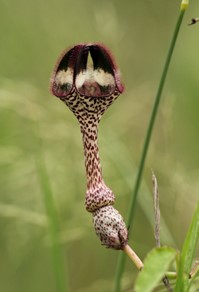
Ceropegia nilotica. Photo by Bart Wursten.
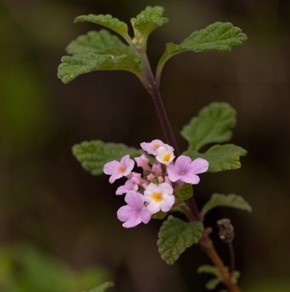
Lantana moldenkei. Photo by Bart Wursten.
In the wooded area was an indigenous Lantana identified as Lantana moldenkei .
Included in the highlights of the day was a chameleon (Chamaeleo dilepis). We leave this to Rob to give the full scientific name.
Since the rains, there were a variety of wildflowers and fungi. The outing culminated in a fine picnic under the shade of the trees which was well-timed by Tony as we missed the rain by five seconds.
Note by Tony: We were surprised to see the area fenced off with a pedestrian gate at the entrance to where we used to enter and park. The entrance is now further down where the tar road comes to an end. Unfortunately, this area is on the side of the hill so there wasn’t any flat ground for us to sit and have our lunch except for the road. Above the parking area, there is now a nursery. So now this is a secured parking area for which we will pay the next time we go there.
Editor’s note: There is a very good video produced on the Botanical Reserve at Christon Bank, by Gus le Breton, The African Plant Hunter and you can watch it by highlighting this hyperlink, right-clicking on it and then left-click on the Open Hyperlink option. https://fb.watch/jdiey7T9jc/
The fragility of rare plants is typified by this lone raphia palm in the Mvuradonha Mountains in a sea of miombo and riverine trees.
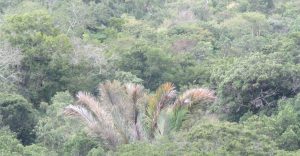
Lone Raphia palm in the Mvuradonha Mountains. Photo Rob Jarvis.
Tree Outing to Marlborough Nursery 25th March 2023
By Tony Alegria
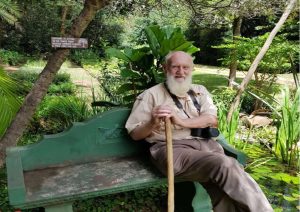
Jim Dryburgh. Photo by Ellen Basson.
Marlborough Nursery? Never heard of it – that was my first reaction! Well, Meg Coates Palgrave, Ali Strangroom, Mark Hyde, Jan van Bel, Jim Dryburgh and myself visited this nursery on Saturday 25th March in the morning. It was a pity we had such a poor turnout and all those who didn’t come lost out as this place was a treat of note! The nursery is run by Ellen Basson, who took us around to see a couple of trees she wanted us to identify. The place is amazing, full of big trees under which, in a small area, seedlings are being grown. As can be seen from the photo, the road into the Nursery was pretty shady with so many big trees. We basically stuck to this road whilst botanizing with the odd excursion to look at something of interest.
Unfortunately, most of the trees are exotic but nonetheless very interesting. In fact, the only indigenous trees we saw were: Acacia xanthophloea; Albizia gummifera; Celtis africana; Calodendrum capense; Craibia brevicaudata; Dais cotinifolia; Dracaena steudneri; Ficus sur; Phoenix reclinata; Rauvolfia caffra and no doubt there are a few more.
On the way to see a creeper with white flowers, the first tree we saw was a custard apple tree, Annona cherimola. Then we looked at a different type of privet – Ligustrum sinense. The next tree of interest with plenty of fruit looked like a Pittosporum but kind of looked different to what we are used to, it turned out to be a Pittosporum rhombifolium.
We saw three species of oak tree, Quercus nigra, Quercus palustris and a Quercus species which could be a Quercus acutissima – one of which is the only convenient shade tree at Halfway House on the way to Mutare.
We saw what I thought was an Acokanthera oppositifolia, but Mark took samples and along with Meg identified it as Acokanthera oblongifolia, the Dune poison-bush.
There was an unknown Albizia which could be Albizia zimmermannii.
The figs were well represented with: Ficus benjamina benjamina; Ficus binnendykii binnendykii; Ficus elastica; Ficus lyrata; Ficus microcarpa; Ficus pumila; Ficus religiosa and Ficus sur.
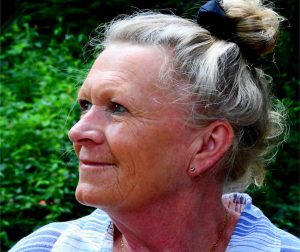
Ellen Basson. Photo by Jim Dryburgh.
One tree that caught my eye looked like an eucalyptus with very papery bark. On close inspection it turned out to a Melaleuca species.
Along Adylinn Road, some of the street trees we saw were: Gmelina arborea, the white teak or Gamhar ; Enterolobium contortisiliquum Ear pod tree; Ficus microcarpa which is fairly common in Harare; Eugenia uniflora Pitanga or Surinam cherry and Gleditstia triocanthos, the Honey locust. There were a few Pitanga cherry trees with ribbed fruit which we sampled.
Of course, there were also a few unknown trees of which Mark collected some samples for later identification at the National Botanic Garden Herbarium. There were some very large Pony Tail palms with huge bases, the likes of which I have never seen before – not even half their size!
Editor’s note: These plants Beaucarnea recurvata are of course not palms at all but from the family Asparagaceae, from Eastern Mexico.
The Brisbane Box
Text and photos by Ian Riddell
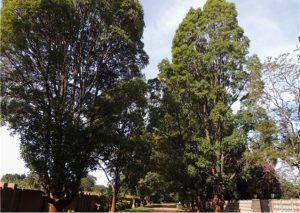
Brisbane Box.
These trees took my interest a couple of years ago, whilst cycling down Fal Road in Vainona. The whole road is given over to them and thus they form an avenue of tall, impressive trees. I thought they might be some sort of eucalyptus, having similar fruit, the crushed leaves are aromatic and the broken-off twigs leave an even more aromatic and sticky gum on your fingers.
Mark told me they were a related tree in the Myrtaceae, commonly planted as a street tree, and he mentions one growing at the intersection of Churchill and College roads in Tree Life 275, January.
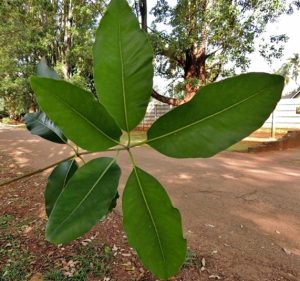
Leaves in whorls with one spare.
The leaf arrangement of these trees was interesting as they were in whorls of mostly four, but, what isn’t mentioned anywhere is that there is often a single leaf below the whorl. You can see this in one of the pictures below. The flowers look attractive, but as I didn’t see any when I recently visited to take some pictures, have included one from the Flora of Zimbabwe site, taken by Mark. The bark is rough and vertically fissured but higher up branches peel like a gum.
The following information is from Wikipedia.
Lophostemon confertus (syn. Tristania conferta), is an evergreen tree native to Australia, though it is cultivated in the United States and elsewhere. Common names include brush box, Queensland box, Brisbane box, pink box, box scrub, and vinegar tree. Its natural range in Australia is northeast New South Wales and coastal Queensland but it is commonly used as a street tree in Sydney, Melbourne, Perth and other cities in eastern Austral
Description
In the wild, its habitat ranges from moist open forest and rainforest ecotones, where it might reach heights of 40 metres or more, to coastal headlands where it acquires a stunted, wind-sheared habit. Dome-like in shape, it has denser foliage with dark green, leathery leaves and hence provides more shade than eucalyptus trees. Moreover, it is considered safer than eucalypts because it rarely sheds limbs.
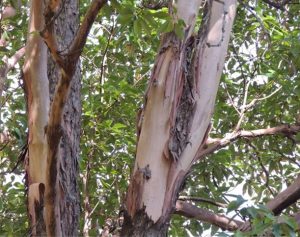
Brisbane Box bark.
Habitat
It is considered useful as a street tree, due to its disease and pest resilience, its high tolerance for smog, drought and poor drainage, and the fact that it needs only moderate-to-light upkeep. It often requires lopping to accommodate overhead power lines, but survives pruning quite well. In form, it is used as a replacement for the weedy Camphor Laurel (Cinnamomum camphora) while having a low potential for being weedy itself. The tree is one of the hardiest and most successful street trees within wider Sydney and elsewhere. One of the best examples is the garden suburb of Haberfield in Sydney where the streets are planted almost entirely with the tree. When the land was subdivided in 1901 the trees were planted in the road reserve creating a regular pattern and well-shaded streets.

Left: fruit (photo Ian Riddell); right: flower (photo Mark Hyde).
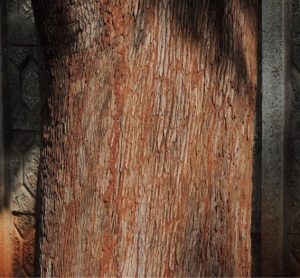 Taxonomy
Taxonomy
The species was formally described in 1812 by Scottish botanist Robert Brown, based on plant material collected from the Hunter River region in New South Wales. Brown named the species Tristania confertia. The species was transferred to the genus Lophostemon in 1982.
The image on the left shows the reddish bark, mainly from termite workings.
National Botanic Garden Tree Outing, Saturday 4th March 2023
By Tony Alegria All photos taken by Kerry-Ann Goddard
Present were the ladies: Ann Butler, Fay Robertson, Kerry-Ann Goddard & Meg Coates Palgrave. Kerry-Ann is a new member who we had not seen before – welcome. The guys present were: Mark Hyde, Jan van Bel, Karl van Laeren, Jim Dryburgh, Chris Chapano, Gus Le Breton, Charles Crawshaw, Irving Hunter and myself. After the walk, Gus and Charles became members of the Society. I had invited Chris Chapano along to help us identify the Commiphoras and he came armed with files which had the names of the trees that had been planted there so many years ago.
To prepare for the outing, Mark, Jan and I met at the Botanic Garden the previous week to see what was there and try to identify them. Some we knew and some we didn’t and what was worse, was that we failed to identify them all. During the last week, Meg and Mark had gone to the Herbarium to try to identify some of the samples Mark had collected and decided that the tree labelled as a Commiphora schlechteri was most likely a C. harveyi. Chris confirmed that this tree had been planted here.
To help out on the day I invited the Lowveld expert, Karl van Laeren and the person in charge of the National Botanic Garden, Chris Chapano. So whilst some of us were looking at the known Commiphoras, others were trying to find names for the unknown ones. The first tree we looked at was a C. karibensis growing close to the car park. Since a lot of the undergrowth has been cleared around the garden, more and more trees have become accessible – this was one of them. We gave it the slash test and found light pink beneath but failed to see the clear sap. Just before we left the National Botanic Garden after the morning botanising, we checked the slash and found that there was now clear sap which had partially filled the slash and had dried into a soft gum.
As we were to walk past some trees with very aromatic leaves, we took a slight detour to visit them and smelt the Cinnamomum camphora, Camphor tree from China and the Murraya koenigii, Curry leaf tree from India and Sri Lanka – always a bit of a surprise for those who have never done so! In the lowveld section, the first tree we looked at was the Commiphora viminea and then the C. caerulea. We looked at the leaves closely to see how many different leaves could be found, in fact, we did that with all the trees and sure enough, there were always differences in the number of leaflets present.
From left to right: bark of C. viminea, C. caerulea, C. marlothii and C. karibensis

Commiphora barks. Photo by Kerry-Ann Goddard.
Commiphora mossambicensis, Pepper-leaved corkwood did not have the characteristic swellings at the base of the little branches as expected and although the leaves did have a pleasant smell, none of us could smell pepper. Next were two Commiphora marlothii. Paperbark corkwood with the very thin pa-per bark that something could be written on – the bole is an unbelievable green!
We then proceeded to what was the mislabeled Commiphora schlecteri . During our labeling exercise, which began a few years ago, we have come across quite a few mislabeled trees. We also have come across many trees we just don’t recognize, which is to be expected because botanical gardens can have trees from anywhere in the world.
Near the tree we believe to be a Commiphora harveyi, we looked at C. karibensis, C. mollis, C. africana and C. schimperi. Further along near the manketti trees, we still were not sure about three trees which may be C. caeruleas. After that a definite C. karibensis and then one with about 8 pairs of leaflets which we think is a C. ugogensis. Chris confirmed it was planted in the Garden somewhere. When these trees were planted many years ago, there were no GPS readings and no map to show what was planted where – probably an impossible thing as there are so many there! I have requested a list from Chris of all the Commiphoras that were planted in the gardens and perhaps then we can positively identify some of the doubtful ones.
Commiphora schimperi has small trifoliolate leaves (image below).
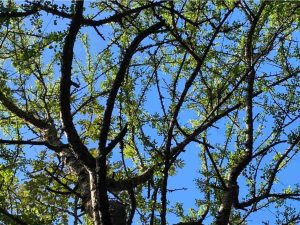
Commiphora schimperi. Photo by Kerry-Ann Goddard.
TREE SOCIETY COMMITTEE AND CONTACTS
Chairman Tony Alegria tonyalegria47@gmail.com 0772 438 697
Vice Chairman Rob Jarvis bo.hoom52@yahoo.com 0783 383 214
Honorary Treasurer Bill Clarke wrc@mweb.co.zw 0772 252 720
Committee member Jan van Bel jan_vanbel@yahoo.com 0772 440 287
Venue Organiser Ann Sinclair jimandannsincs@zol.co.zw 0772 433 125
Committee member Ryan Truscott ryan.kerr.truscott@gmail.com 0772 354 144
Secretary Teig Howson teig.howson@gmail.com 0772 256 364
Tree Society Website https://treesociety.org.zw/
Tree Society Facebook https://www.facebook.com/groups/ztreesociety/
Flora of Zimbabwe: https://www.zimbabweflora.co.zw/
Flora of Tropical Africa: https://plants.jstor.org/collection/FLOTA
The following picture was bumped off the front page by members’ desire for more Indigenous Trees and fewer Aliens.
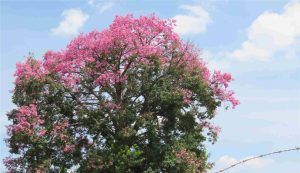
Ceiba speciosa, Borrowdale Road. Photo by Rob Jarvis.


